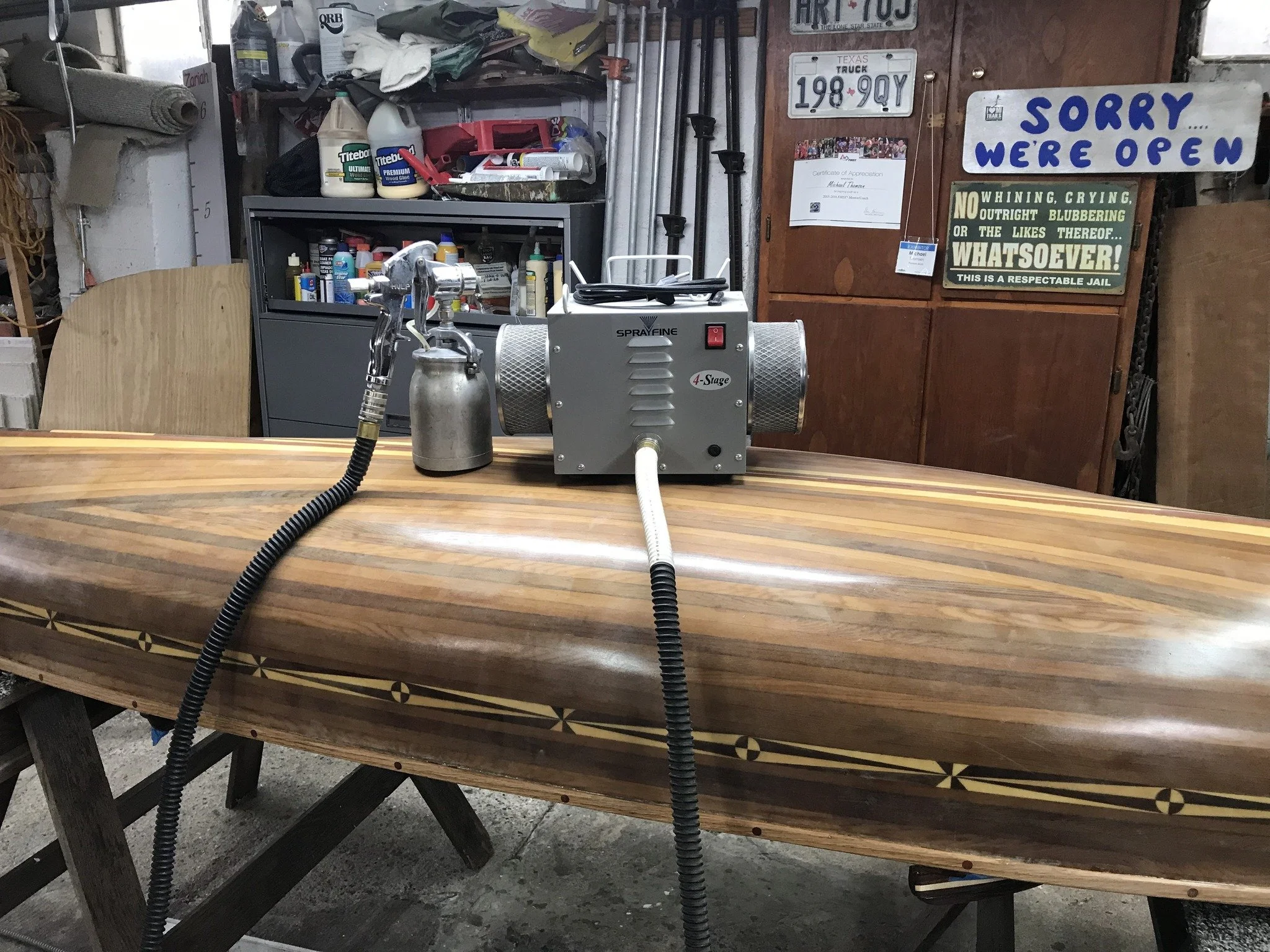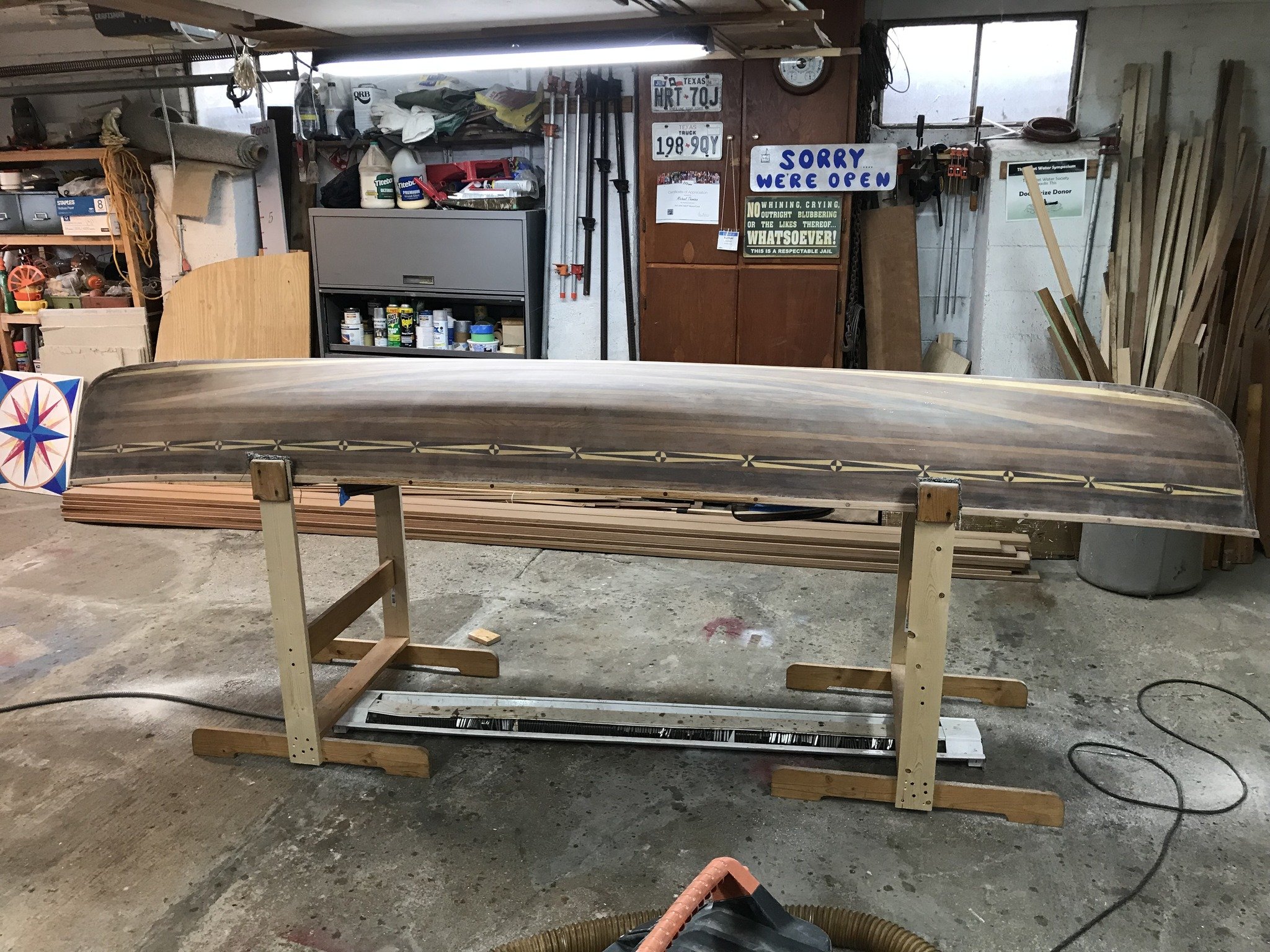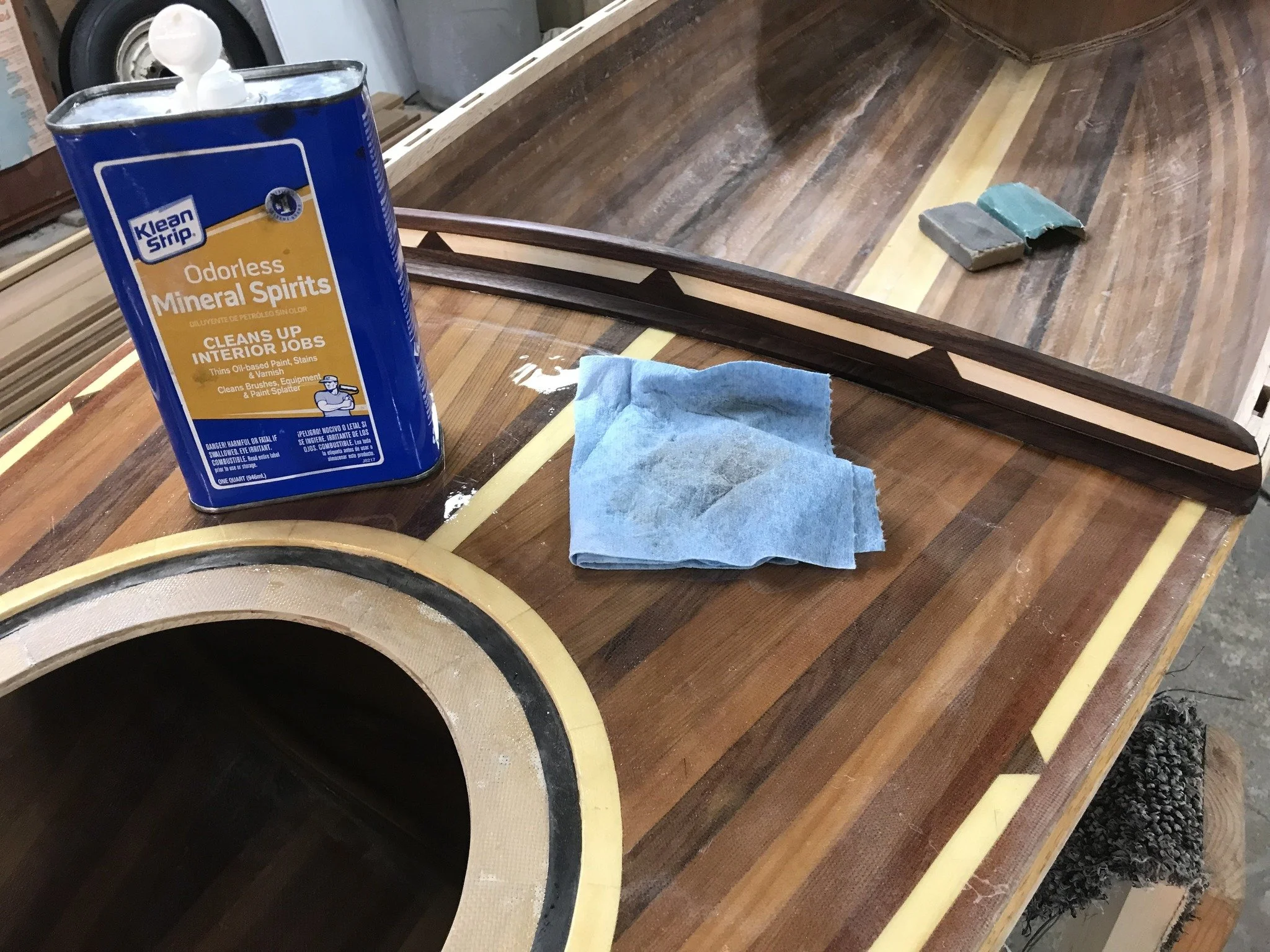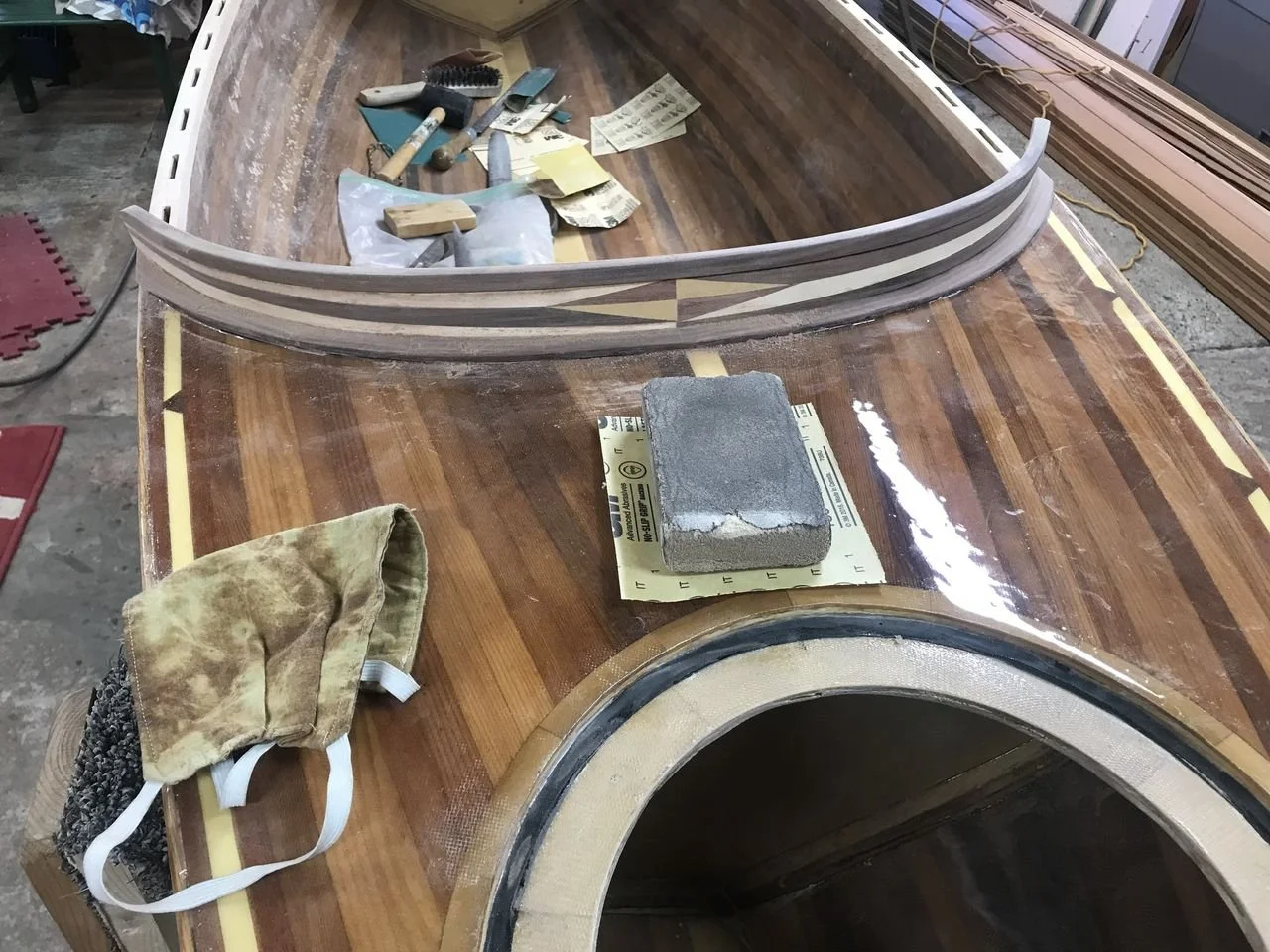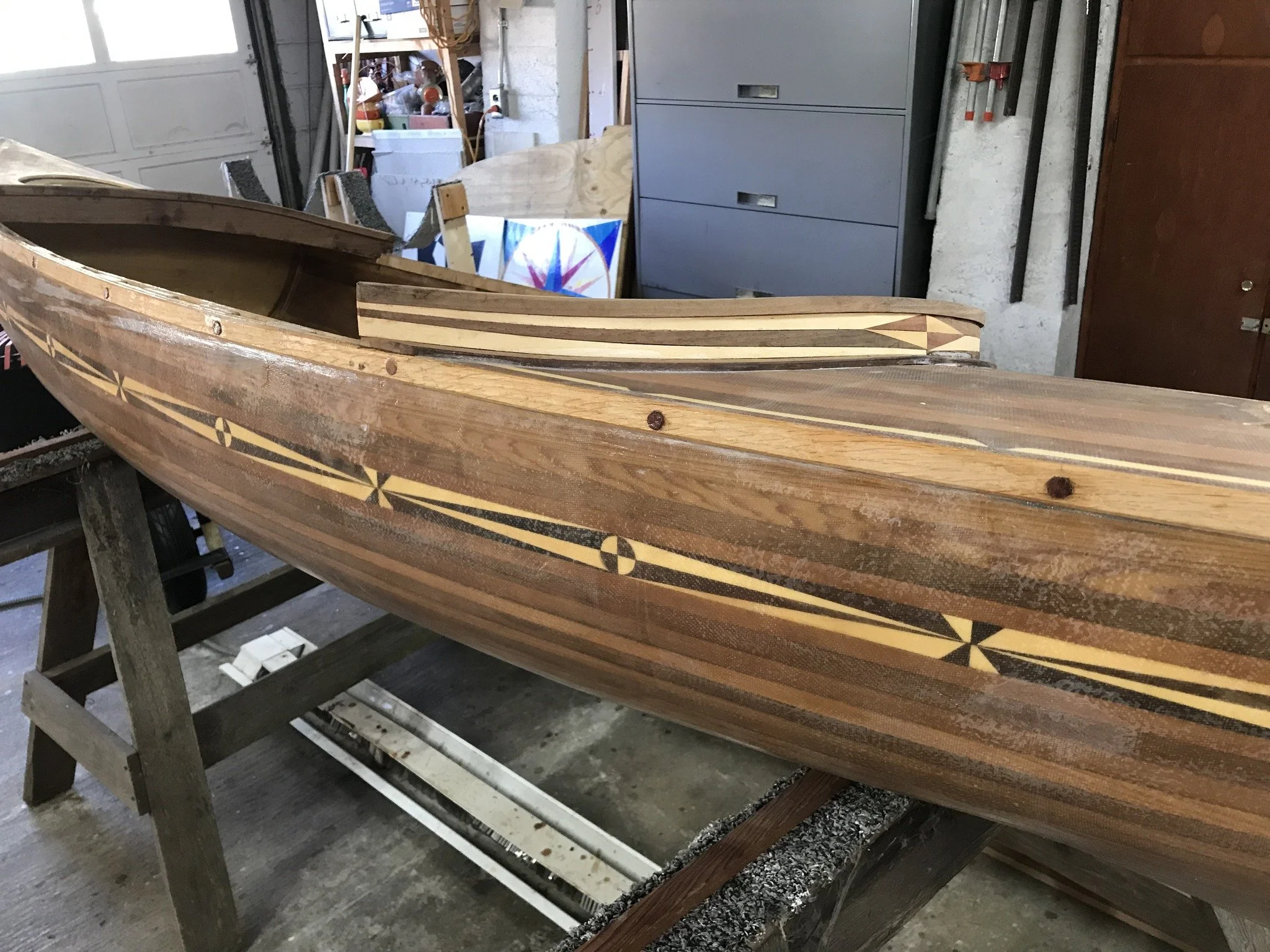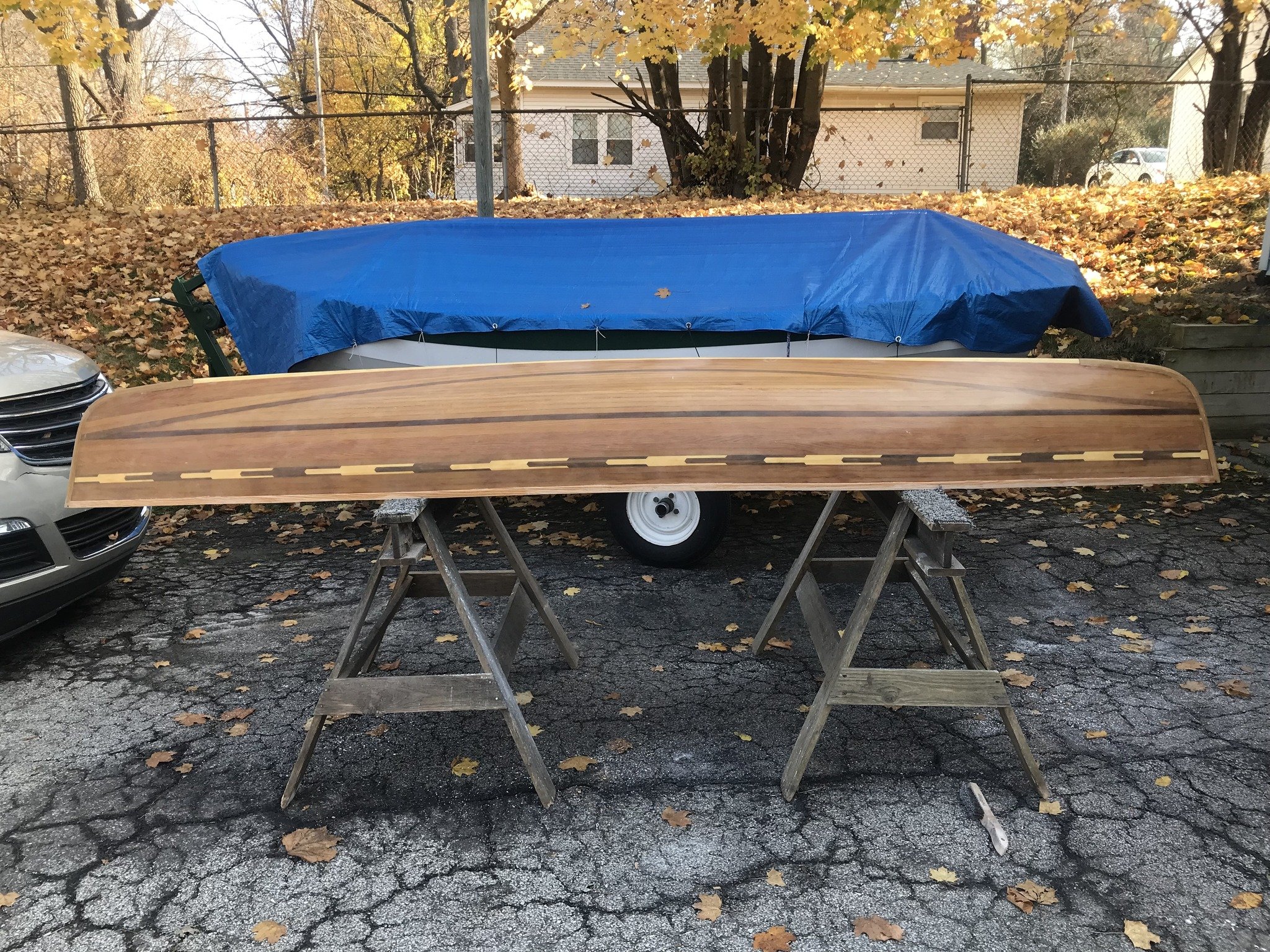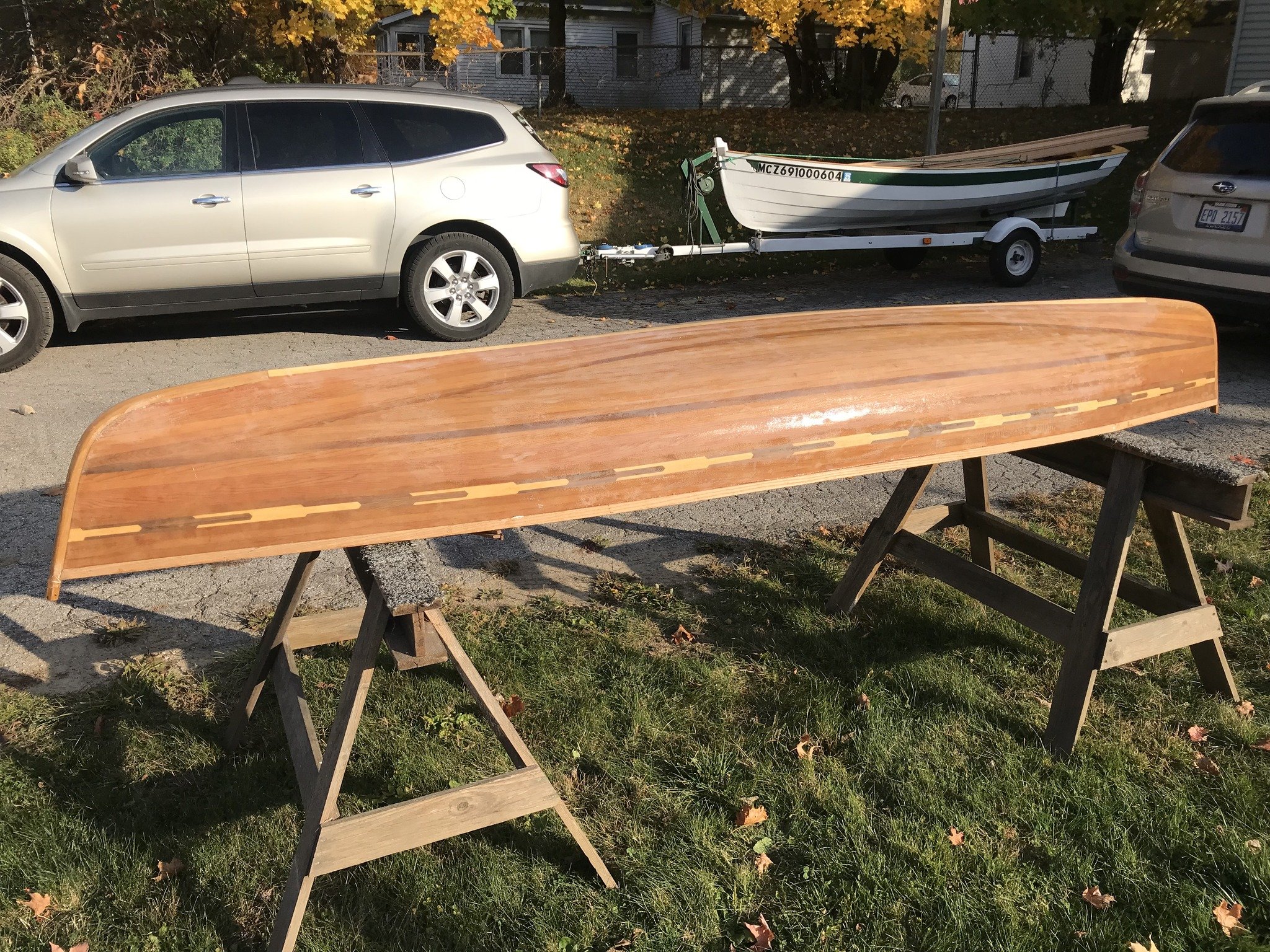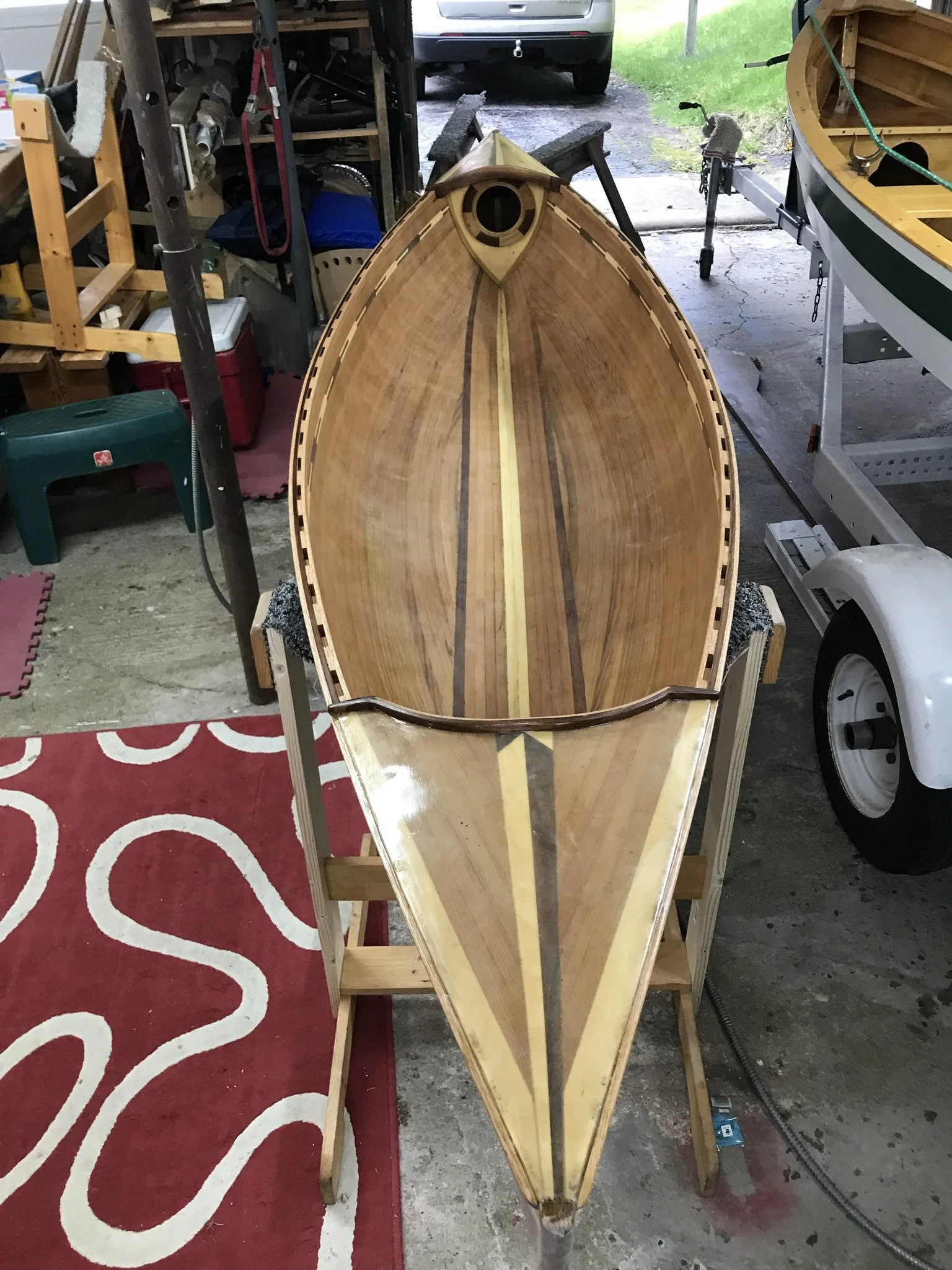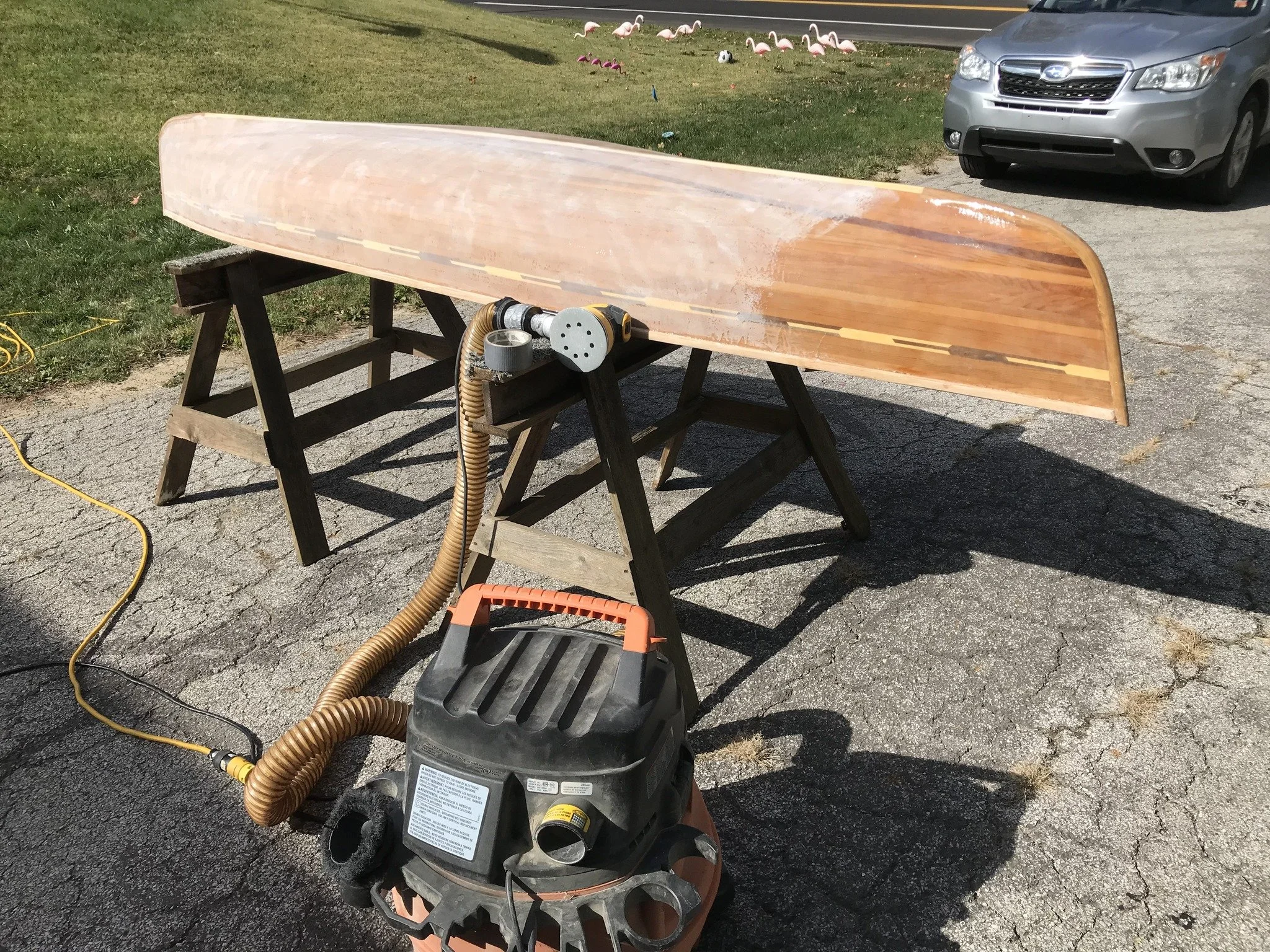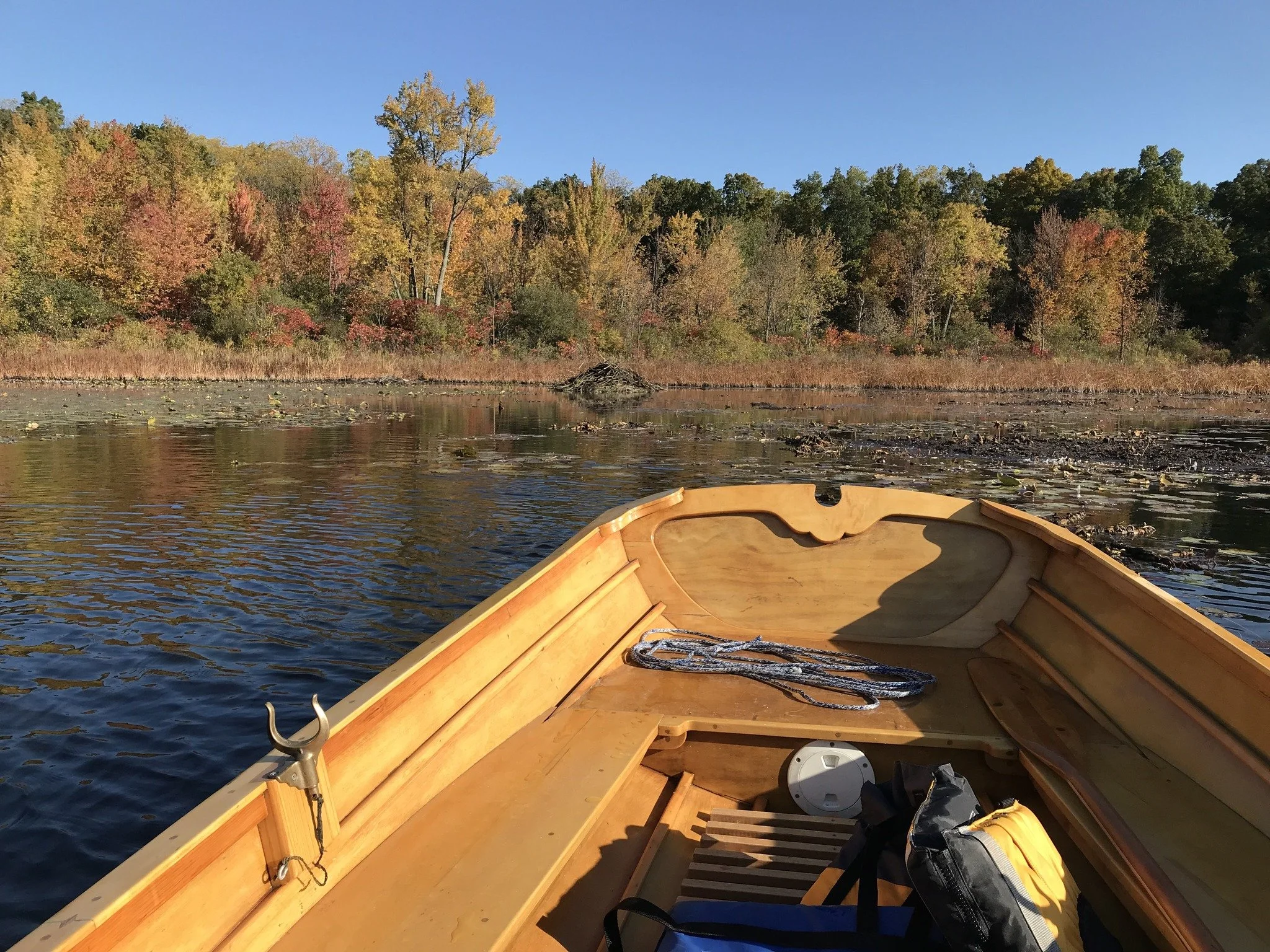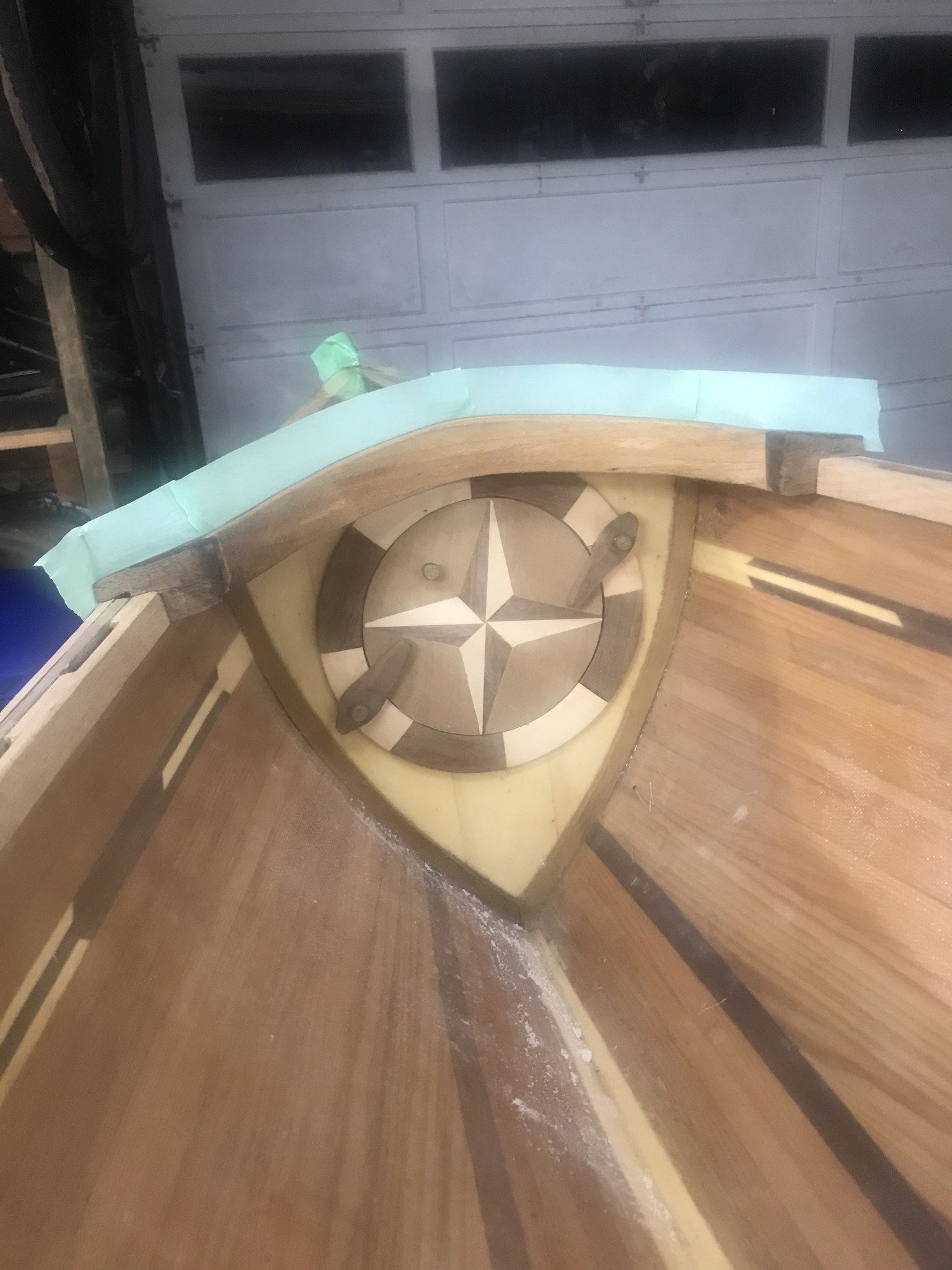I returned boat number 3 yesterday and we finally got Dave boat number 4 to my house and I'm figuring out what all needs to be done and in what order. The hull is still on the building jig and I'll leave it there until I get the fiberglass on the outside of the hull. Before then I've got a bit of work to do one the hull.
Read MoreThree down and one to go. This is the third boat that I have taken on to finish this winter and I have one more (at least one) to go. The first three boats were mostly built and I put a finish on them. The fourth boat is partly built and I'm going to have to put on my thinking cap for this one.
Read MoreSpray day! This picture is of the handiest thing since pockets on a shirt. It is a high volume low pressure paint sprayer (HVLP) and is one of my best friends.
Read MoreBORING! I haven't posted in awhile because I haven't done much more than sand, sand, sand on Dave boat #3. In my previous post I was sanding and putting a coat of polyurethane on the wooden gunwales and coamings. Since then I've been sanding the epoxy resin on the hull and decks. And sanding and sanding and sanding. I'm ready now to get a coat or two of the polyurethane on the rest of the boat in preparation for spraying the final coat on everything.
Read MoreWhen the sanding is done I vacuum the wood and then wipe it down with a rag. I then make a tack rag with a blue paper towel ( they're supposedly lint free) and mineral spirits and wipe the wood again. Mineral spirits is the solvent for the polyurethane that I use as a base coat. I dilute the polyurethane with mineral spirits about 3 parts poly to 1 part thinner and put 1 coat of finish on all wood surfaces to enhance the grain of the wood.
Read MoreThere doesn't appear that there is a lot of wood to sand on this boat but it takes time to work through it all. The bow coaming is the nicest of any of the boats and I want to make sure that I go over it carefully. The gunwales and coamings were awfully rough when I began so I started shaping and smoothing with rasps and a plane.
Read MoreI've got the first coat of resin on the decks and hatch covers and should be able to get a second coat on this evening. When that coat is dry I'll start sanding on all of the wood parts (coamings and gunwales).
Read MoreI brought Dave Boat 3 home 10 days ago and haven't done anything with her until yesterday. Life got in the way mostly spending time putting flower beds to rest for the winter and corralling the neighbors leaves which end up in my yard.
Read MoreI returned Dave Boat 2 yesterday and came home with Dave Boat 3. I think I've gotten these boats in the order which they were built. Each boat is a bit different from the others and this one has some tricks that weren't in the other boats.
Read MoreDave Boat 2 is done and ready to go home. An advantage to using a water borne finish is the speed at which they dry. I had finished sanding on Thursday and was able to get a diluted coat of oil based urethane on the boat on Thursday and Friday.
Read MoreSand, sand, sand. Take a break, drink some coffee and sand some more. With a random orbital sander I'll make one pass over the hull with 120 grit and then go back and do it again with 150 grit. I'll then vacuum everything and go over the entire hull by hand with 150 grit on a soft sanding pad. The last time around by hand will let me look for anything that I missed with the power sander. Getting closer. Sand, sand, sand.
Read MoreDave boat two has gotten all of the epoxy resin that she'll get and it's time to sand, sand, sand. The hull is made of western red cedar and the gunwales are made of white oak. A nice contrast in colors.
Read MoreYou can see from the accents stripes that Dave was a clever fellow. What you can't see from these pictures is that Dave built all these strip boat without using any staples. Those who have looked into the "strip built" technique know that the standard method is to staple the strips to the forms as you are glueing the strips together and then removing the staples before applying the fiberglass. It is the way that I have built every boat.
Read MoreI was able to return canoe #1 and pick up canoe #2 for completing the finish. That means more epoxy resin on the hull and lots of sanding.
Read MoreDave Boat No.1 is ready to go home. I've got multiple coats of the water borne laquer over a coat of solvent based urethane on the entire boat. I've got to say again that I couldn't be happier with the finish, it is easy to apply, looks great and it is tough as nails.
Read MoreFinally. I've gotten the interior sanded to my satisfaction and it is time to start with the finish. I'm using a water borne finish, "Exterior 450" by General Finishes for the topcoat on this boat. I think it is classified as a water borne urethane and is part of a group of finishes that I have fallen in love with. I mentioned earlier how hard it is to keep the floaties in the air out of a solvent based varnish because varnish takes so long to dry. That isn't a problem with the water borne finishes because they dry so quickly. I'll spray the topcoat with a High Volume Low Pressuure sprayer system which does a really good job with these kinds of finishes.
Read MoreHad to break out the big guns. The first three or four boats that I made I sanded everything by hand. When I finally got a random orbital sander my life changed for the better. They're a lot faster than working by hand but are easier to control and not as agressive as a belt sander. Dave had finished the boat exterior as he had the interior, just one coat of resin resulting in a rough surface. I took it on myself to add more resin so I could get a smooth finish on all exterior surfaces. I think it will be a nice contrast between the two.
Read MoreNot much to report on the Dave boat, I'm still burning through the sandpaper in preparation to getting a finish on the boat . I did get out yesterday for an early morning row even though the wind was more than I like. I've got three lakes close by that I rotate through depending on which way the wind is blowing. The wind isn't your friend in a small boat.
Read MoreLots of elbow grease in my near future. I've got all of the epoxy resin on the boat that I'm going to and now the sandpaper, rasps, planes and spokeshaves get to do their part. Next week I should be getting finish on the boat.
Read MoreThere are two schools of thought when it comes to fiberglassing a wood strip canoe. One school calls for only one coat of resin when applying the cloth. This is done to leave a finish with some texture to it which would end up with a non skid type surface. It is very hard to squeegie the resin out of the cloth and end up with a consistent surface. Dave, the builder of these canoes was of the one coat, rough surface school and I'm leaving the interior of this first canoe as is as he did a very good job of ending up with a uniform, consistent surface.
Read More



